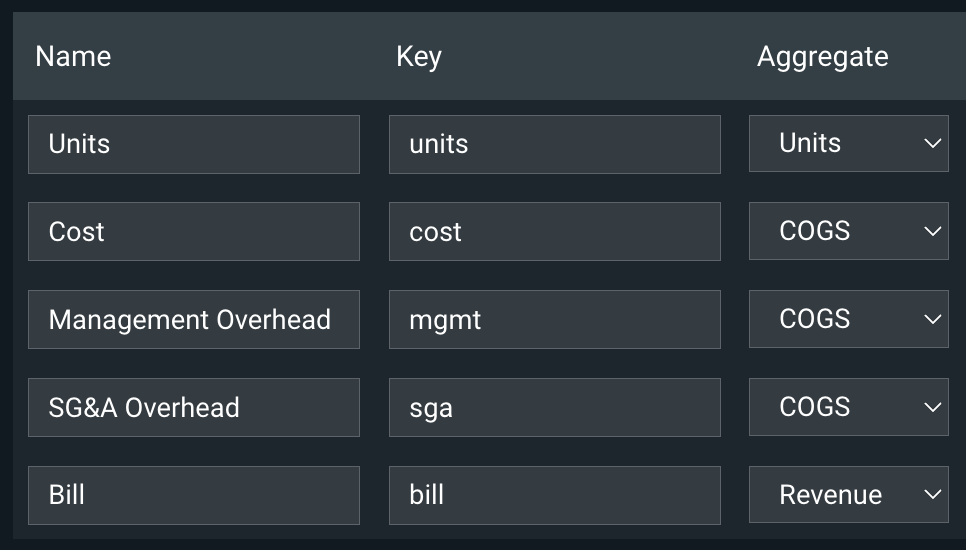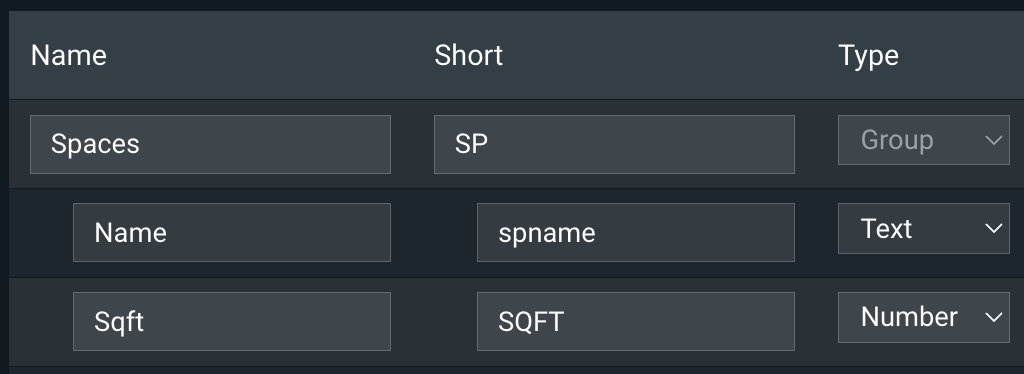What Is It?
The OAE Math feature lets estimators create custom formulas that use data from estimation columns, rate cards, and custom properties – formulas that can be used in a variety of places and levels in the estimate.
Why Do I Need It?
The way your business operates isn’t just like everyone else’s, and you need your estimation tool to reflect that. Math provides one of the key ways OAE helps you customize it to fit your needs – and prevent repetitive error-prone work.
Instead of having to create the same formula (like Cost per Square Feet or Margin Dollars) each place it’s needed, you can define it once and reuse it. This is useful for reporting and bid analysis, allowing organizations to configure their own formulas and display the results of the formulas in various locations.
What Exactly Can It Do?
Let’s look at some examples.

Margin $: Here is a simple formula that pulls from the rate card’s Structure. $_rev is the rate card aggregate variable, a group value for all rate card columns configured as Revenue. Similarly, $_cogs is the rate card aggregate variable for all Cost of Goods and Services columns in the rate card’s Structure. These special variables let you access the total revenue, COGS, etc. for the context (project, work item, or line item) the formula is used in, whether you have one rate card column of that type, or ten. So of course, subtracting COGS from Revenue gives you a basic margin calculation.

Price / Sqft: This formula pulls from the rate card’s Structure using $_rev, but also pulls from work item properties using $_grp. This special variable accesses a specific property or a group of properties. In this case we have a property group, SP, that contains the property SQFT. So here we’re calculating the revenue per square foot.

Variables and Functions Supported
Math formulas can use the following types of variables, functions, etc. – they can be quite complex!
- Estimate columns (from Structure)
- Rate card aggregates
- Rate card columns
- Project custom properties
- Work item custom properties
- Common math operators
- Common boolean tests
- Common conditional expressions
- Unit conversion
- Operators and expressions used by math.js
- 18 different types of measurements, from length to mass to energy and beyond
- Standard metric prefixes from yocto- to yotta-
Formatting Controls
The OAE Math feature lets you control the display formatting for decimal, currency, and percent values, like setting the number of decimal places to show, and adding a unit of measurement (or other text).
So, in the case of our Price / Sqft example, we want to make sure the number returned is formatted like currency and has ‘$/sqft’ after it, like this:
Result Locations
Math formulas can be used in a number of places, at the project, work item, and/or line item level.
Project level
In the summary row above the Work Items table in Project Home, and in the Project Summary tab, the value output is based on all work items
Work item level
As a column in the project’s Work Items table, with the value output being based on the work item in each row
Line item level
As a column in the Line Items table for a work item, with the value output being based on the line item in each row
Customizing Math Formulas for Your Project
The OAE Math feature balances standardization with customization by supporting both default Math formulas that every new project gets and allowing individual projects to override the defaults.
Default Math is a system setting that admins can use to set up formulas you want every newly created project to have. When a new project is created, it gets a copy of the current default formulas. Those copies can then be modified.
Note: Changes to a project’s Math formulas don’t affect the system defaults or the formulas in any other project, while changes to the system default formulas are not applied to existing projects.
Formulas in Pivot
If a formula is configured to show as a work item column, it is available to use in Pivot reports, just like the project’s Structure columns.
Values in formula columns will be aggregated just like Structure columns when you add a grouping in Pivot.
Get OAE Today
If you’re already using OAE, you get the OAE Math feature automatically. If you aren’t using OAE yet, contact us today to get started.

